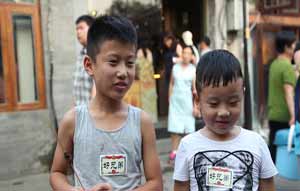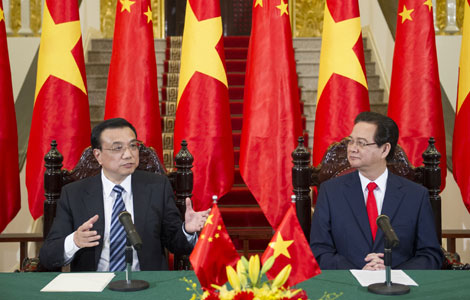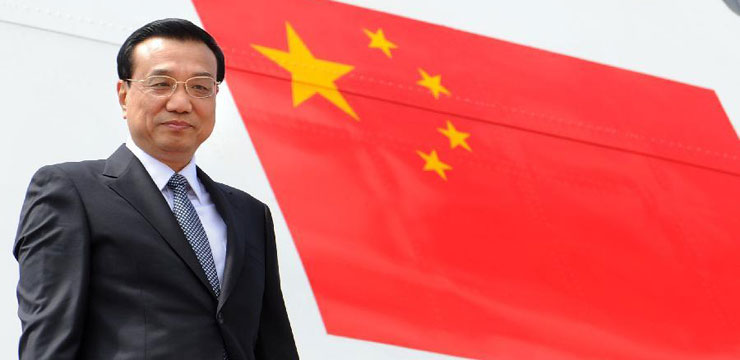Holding a mirror to China's economy through cosmetics
Updated: 2013-10-15 09:44
By Caroline Berg in New York (China Daily USA)
|
|||||||||||
Money may not buy happiness, but when it comes to the beauty enhancement department, it sure can help. In China, it appears, that as the GDP grows, so does the appetite for cosmetics.
Reportlinker.com, a search engine that provides industry reports, company profiles and market statistics published by private and public organizations, recently released the China Cosmetics Industry Report, 2013-2016, which tracks how the health of the economy is reflected in beauty consumer trends.
The growth of China's cosmetics industry, which includes skin care, makeup, perfume, men's cosmetics, cosmeceuticals and babycare products, has recently been stunted due to the combined effects of the global economic recovery and the slowdown in China's economic growth, with gross retail sales amounting to $21.94 billion, according to the report.
In comparison, China saw rapid growth in the cosmetics market in the beginning of the century. In 2010, sales of beauty and personal care in stood at $24 billion, more than triple what it was just 10 years before, according to a Cosmoprof-Asia article published in July.
Presently, foreign brands are still the mainstream of China's cosmetics market, with the top three — L'Oreal Paris, Olay and Mary Kay — collectively occupying 12.45 percent of retail sales, according to the Reportlinker.com report.
L'Oreal is the world's largest cosmetics enterprise, and has managed to maintain stable business growth since entering the Chinese market in 1997, according to the report. As of late 2012, the company was running 20 brands in China, including L'Oreal Paris, Maybelline and other well known names, as sales in China grew 12.4 percent year-on-year to nearly $2 billion.
L'Oreal is banking on lotions using traditional Chinese herbal remedies, and also products targeted at China's fast-growing men's cosmetics market, according to a Businessweek article published in March.
Among the company's latest inventions tailored to the market include a cosmetic balm for Chinese men looking to mask face blemishes and skin serums made from traditional herbal remedies such as cordyceps, a parasitic mushroom, according to Businessweek.
Skin care products are the largest cosmetics category in China, the Reportlinker.com report said. Its market scale in 2012 hit $13 billion, up 9.9 percent year-on-year.
Among skin care products, the report said cream and anti-aging products are the most popular, with sales standing at above 60 percent collectively in the China skin care product market.
"Chinese women are developing more sophisticated routines," Lui Meng Chow, a Mintel research analyst, said in the company's Facial Skincare — China — July 2013 report.
"Even though the facial skincare market is mature, there are still gaps that exist between consumers' needs and the products that are currently available," Chow said. "Diversification therefore offers an opportunity for domestic small brands and new players in the market, who were initially being squeezed by the sway of foreign giants."
Chow said the impact of rising income and increased skin concerns in China has seen the facial care industry move its focus from providing simple facial care to include those products that deliver on specialized facial care treatment.
The analyst said products with natural ingredients and carrying "zero-burden" claims, such as additive-free products, are favored amongst Chinese consumers, following a deluge of product safety scandals.
As for China's makeup market, the Reportlinker.com report said that sector started late, but has developed rapidly with sales in 2012 grossing $3.8 billion, a year-on-year rise of about 20 percent.
Mintel research analyst Wenwen Chen said in a company report that the growing affluence among Chinese consumers will continue to affect the color cosmetics sector, which includes lip, face, eye and nail coloring tools.
"As income increases and basic life quality improves significantly, Chinese women could be expected to spend more, in particular on discretionary goods like color cosmetics," Chen said. "Their soaring purchasing power provides the greatest long-term potential for growth."
The analyst said there is great opportunity to convert millions of non-users in the lower tier cities and rural areas, while at the same time tapping into the middle classes that are spurring demand for discretionary spend items.
In men's, children's and infants' cosmetics, the Reportlinker.com report said sales in these emerging market segments still occupy a relatively small share in China cosmetic market by sales. As of late 2012, China's sales of men's cosmetics stood at less than 5 percent, while that of children and infants' skin care products accounted for less than 5.3 percent.
Contact the writer at carolineberg@chinadailyusa.com
Related Stories
Hey, big cosmetics spender 2013-02-03 07:38
Cosmetic brands to start new price hikes 2013-01-11 11:15
Cosmetics giants brush off any talk of slump in China 2012-11-24 09:09
Cosmetics brush off an economic slump 2012-11-23 14:53
Tighter purses mean cosmetics market losing its gloss 2012-11-09 09:36
China regulates children's cosmetics production 2012-10-22 13:45
Today's Top News
SAFE to buy Paris shopping center: Report
At least 20 killed in strong Philippine quake
China confirms new human H7N9 infection
Man sentenced to 6 years in jail for airport blast
The HK-Shanghai win-win vision
Holding a mirror to China's economy through cosmetics
All 86 tourists evacuated from Mount Qomolangma
UK 'open' to Chinese nuclear investment
Hot Topics
Lunar probe , China growth forecasts, Emission rules get tougher, China seen through 'colored lens', International board,
Editor's Picks

|

|

|

|

|

|





